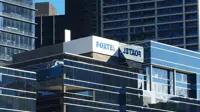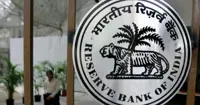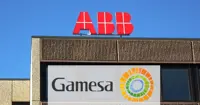UK taxpayers face massive burden till 2016
07 Apr 2009
The UK government may have to find an extra £39 billion a year by 2016 to control rising borrowing because of collapsing tax revenue mainly from the recession-hit housing market, says a report by the Institute for Fiscal Studies (IFS).
This is on top of the £38 billion of fiscal tightening the chancellor announced in November's pre-Budget report (PBR).
IFS is an independent economic institute that specialises in research on UK's economic and social policies.
The think tank indicates that if the deficit was met purely through tax raising, each British family would face an increase of £1,250 in their annual tax bill. To raise the £39 billion without raising any taxes, there needs to be a five-year real freeze in total public spending. Another possible solution is to print rather than borrow for much of the government's spending.
Chancellor Alistair Darling is due to present his Budget on 22 April.
He may also be forced to revise his forecast for public sector net borrowing. According to IFS calculations, net public sector borrowing will be 10.4 per cent of gross domestic product (GDP) in 2009-10 and 10.5 per cent in 2010-11.
The authors of the report, Robert Chote, Carl Emmerson and Gemma Tetlow also warned that the total burden of outstanding government debt, which is already over the government's previous target of 40 per cent of GDP, could double to more than 80 per cent of GDP by 2016.
While the government says that net debt will gradually fall back towards the 40 per cent level.
''On current trends, the government is likely to have to borrow £95 billion in 2008-09, about £16.8 billion more than it anticipated in the PBR. Public sector net investment is on course to overshoot the PBR forecast by around £4.3 billion, while revenues are set to undershoot by £12.5 billion,'' the report said.
In making its calculations, the IFS assumed that the government would ultimately have to cover bank losses of £130 billion using estimates prepared by the International Monetary Fund (IMF), which have so far not been included in the government's calculations.
"In the absence of further cuts in public spending plans and / or tax increases, public sector net debt might soon climb to around 80 per cent of national income, compared with the peak of 57 per cent of national income forecast in the pre-budget report," IFS said.
"We do not expect the Chancellor to paint as pessimistic a picture as this in the Budget later this month, with a smaller combination of new tightening measures and increases in forecasts for borrowing and debt more likely," it added.
The projections show public sector net borrowing at around 10.5 per cent of national income in 2009-10 and 2010-11. For comparison, the latest forecast from the IMF shows UK general government borrowing reaching 9.5 per cent in calendar year 2009 and 11 per cent in 2010.
''In cash terms, under our baseline, the budget deficit would be around £150 billion a year in 2009-10, 2010-11 and 2011-12,'' the report said.
By 2015-16, the PBR predicted that the current budget (revenues minus non investment spending) would be back in balance and that the public sector would be borrowing 1.8 per cent of national income, entirely to fund investment. Our projections show the current budget still in deficit by 2.3 per cent of national income in 2015-16, with the public sector borrowing 4.1 per cent of national income in total.
In February, the Bank of England forecast that the economy would shrink 0.8 per cent in the year to April and a further 2.9 per cent in following 12 months.
"I'm sure the government will want to be cautious in this respect," Bank of England governor Mervyn King said. "There is no doubt we are facing very large fiscal deficits over the next two to three years.
"Given how big those deficits are, I think it would be sensible to be cautious about going further in using discretionary measures to expand the size of those deficits,'' he added.
IMF recently warned that Britain is facing the biggest government deficit in the western world, even before it has pledged any extra cash to be spent on the recession.
The recession is eating into its tax revenues and increasing the amount it has to spend on unemployment benefits for laid-off workers. The cost of these so-called automatic stabilisers is likely to be even greater than the £20 billion spent by Alistair Darling at the pre-Budget report in November on cutting VAT for a year.




.webp)


























